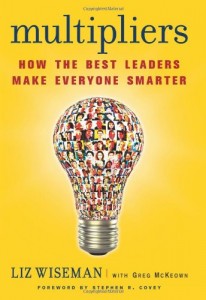 By Rose O. Sherman, EdD, RN, FAAN
By Rose O. Sherman, EdD, RN, FAAN
Last week, I attend the American Organization of Nurse Executives Meeting in Denver, Colorado. One of the keynote speakers was Liz Wiseman, co-author of the book Multipliers. Wiseman proposed that there are two types of leaders which she describes as multipliers and diminishers. The diminisher drains intelligence, energy, and capability from the people around them and always needs to be the smartest person in the room. These are the idea killers, the energy sappers, the diminishers of talent and commitment. On the other side of the spectrum are multiplier leaders who use their intelligence to amplify the smarts and capabilities of the people around them. When these leaders walk into a room, light bulbs go off over people’s heads; ideas flow and problems get solved. These are the leaders who inspire employees to stretch themselves to deliver results that surpass expectations. They are transformational in their leadership style.
Relating These Ideas to Transformational Nursing Leadership
Transformational leadership theory was first introduced in 1978 by James McGregor Burns. He described it as leadership that occurs when the leader engages with followers in a way that raises their level of performance and motivation. Those influenced by transformational leaders find meaning and value in their work, are able to make significant contributions to their organizations and are more likely to become leaders themselves. There are four key attributes of transformational nurse leaders:
1. The leader serves as a role model and “walks the talks”.
2. They inspire motivation in their followers by having a strong vision about their work.
3. They are concerned about the individual and demonstrate genuine concern for their needs and feelings.
4. The leader challenges and develops the followers to be innovative and creative nurturing independent thinking.
All of these attributes of transformational nurse leaders are part of the profile of what Wiseman describes as a multiplier. A significant research finding in the work of Wiseman and Mckeown is that Multipliers get twice the capability (or intelligence) from the people that work for them compared with Diminishers. This ability to expand human capital is a very important leadership skill. She suggests the following two important interview questions to ask applicants to determine whether they are multipliers or diminishers:
- Tell me about your team. (Then start the stop watch to see how long the conversation lasts!)
- Who is at your current company/organization because of you? (Multipliers tend to be talent magnets)
In times of reduced resources such as we are experiencing in health care today, transformational nurse leaders who are multipliers become very valuable. Wiseman points out that when you are forced to scale back, you can do one of two things. One, sit back and wait—for additional resources, for budgets to increase—in hopes that you can rehire and get that talent back. Or, you can look inside your organization and see that there may be underutilized talent and intelligence right there. Although people seem overworked on the surface, they might actually be underutilized intellectually. The brainpower for solving some of your problems and challenges might be sitting right in front of you. As multipliers, transformational nurse leaders are able to fully engage and tap into the skills of all staff. This involves the ability to be inclusive in conversations and seek out diverse opinions before making decisions. It means encouraging creativity and innovation. Through engaging staff, multiplier leaders create healthy work environments that no one wants to leave.
Read to Lead
Wiseman, L. & Mckeown, G. (2010). Multipliers: How the Best Leaders Make Everyone Smarter. Harper Business.
[amazon asin=0061964395&template=iframe image&chan=default]
© emergingrnleader.com 2013


 LinkedIn
LinkedIn Instagram
Instagram